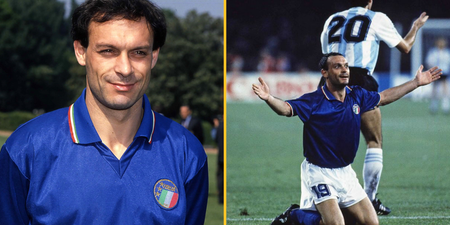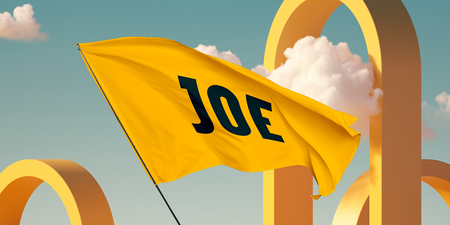What should be the top honour in club football has instead become a byword for ultra violence, indifference and controversy
Go on, can you name who won last year’s Club World Cup? Even better, can you name the team they beat in the final? If you just said Bayern Munich take a bow. If you then said Raja Casablanca, you need to be headed to Mastermind.
The 2014 edition of the most misbegotten tournament in the calendar has already begun and on Tuesday Real Madrid will play Mexican side Cruz Azul in the semi-final of the Fifa Club World Cup in Morocco. If they win, they will play the victor of Argentina’s San Lorenzo and New Zealand’s Auckland City in the final on Sunday.
But the level of interest in the tournament is virtually non-existent and the reason for that is in large part to the frankly horrific history of the competition, which has been pock marked with disgraceful violence, complete disinterest and controversial decisions.
It all started in 1960 when, you guessed it, Real Madrid took the honours, beating Uruguay’s Penarol over two legs, back when it was just a straight fight between the winners of the European Cup and the Copa Libertadores.
The first few years were studded with big names and no real trouble. Pele’s Santos won it in 1962 and 1963, beating Giovanni Trapattoni’s AC Milan for the second crown and Inter Milan would win it in 1964 and ’65, before Penarol beat Real to take the 1966 edition.
So far, so good but in 1967 the competition began its descent into the sort of violence unimaginable today. Celtic had played two fractious games against Racing Club of Argentina but with the score tied at 2-2, a third game had to be played to separate them. The end result was the now infamous ‘Battle of Montevideo’.
As you can see from the footage below, it was a truly vicious game, with five players sent off as the Scottish side went down 1-0. A flavour of the mood is provided by Celtic’s Tommy Gemmell, who said of one incident in the game “You don’t mind someone kicking you but for someone to spit in your face that’s not allowed. I said I’m going to have you. So I hit him with one almighty kick in the goolies. What a scream he let out.”
Incredibly, things got worse in subsequent years. Manchester United’s defeat to Estudientes in 1968 saw George Best get sent off but 1969’s final was the clash that really ruined the competition’s reputation.
When AC Milan faced Estudientes in La Bombonera the level of violence was really on a scale that is unimaginable now. Milan keeper Pierino Prati was left with a concussion, the great Gigi Riva was punched in the face and Argentine-born Nestor Combin was kicked in the face, suffered a broken nose and cheek after another elbow and he fainted when the referee asked him to come back on.
To compound the horrific treatment of Combin, he was arrested on suspicion of dodging the Argentinian draft, and he had to spent a night behind bars before his service with the French army was proven, allowing him to be set free.
Despite a crackdown by the Argentinian authorities in the wake of the 1969 disgrace, things didn’t improve. Ajax decided not to go to the 1971 final, sending European Cup runners-up Panathinaikos instead. The Greek side’s Yiannis Tomaras had his leg broken in two places in the first leg against Uruguay’s Nacional.
Ajax played, and won, in 1972 despite death threats sent to Johann Cruyff by Independiente fans but they swerved it again in 1973. Bayern refused to play Independiente in 1974 and both European Cup final teams in 1975 (Bayern and Leeds) refused to play them.
Liverpool refused to play in the 1977 and 1978 deciders and by 1980 the competition was on its knees, brought low by the sheer brutality of the games, with financial losses and low attendance not helping either.
Toyota stepped in to sponsor the now Japan-based competition and teams were legally obliged to attend but interest in the games remained low. Even when Manchester United went and won it in 1999, thanks to a Roy Keane goal against Palmieras, it barely caused a ripple in this part of the world.
By 2000, the Fifa Club World Championship had been created and it remains best known as the controversial driver behind Manchester United’s decision to skip that year’s FA Cup. Compounding the pointlessness of that move, United went out early and the collapse of Fifa’s broadcast partner International Sport and Leisure meant it wasn’t held for the next four years.
The Toyota Cup limped along until 2004 so it was only in 2005 that the Fifa Club World Championship became the sole arbiter of who the best team in the world was. And even that hasn’t really sparked any life into the competition that was rebranded as the Club World Cup in 2006.
Liverpool lost the 2005 final, with the club’s participation best known for the fact that Rafa Benitez’s father died in the week leading up to the decider with the Spaniard staying in Tokyo with the team rather than returning home for the funeral.
Manchester United won it in 2008, beating LDU Quito, but we doubt only the most hardcore of fans remembers much or anything about the game. We wonder if Wayne Rooney even remembers scoring the winner.
And, as we proved at the top of the article, the 2013 final faded into obscurity almost as soon as it was over.
In theory it is a great idea, pitting the best club sides in the world against each other. However, the stench of its inglorious past has clung to it and with such a crammed calendar it seems doomed to remain a layby of the football super highway.
It’s a shame really. Clubs may rule the world game these days, but the Club World Cup looks like it never will.











































